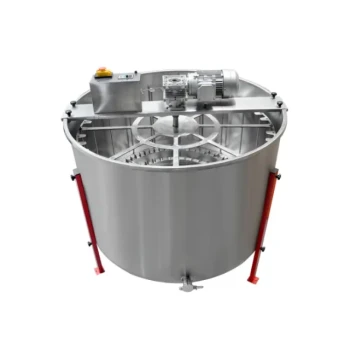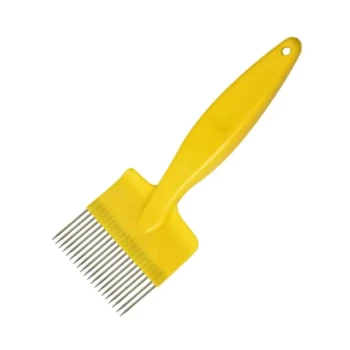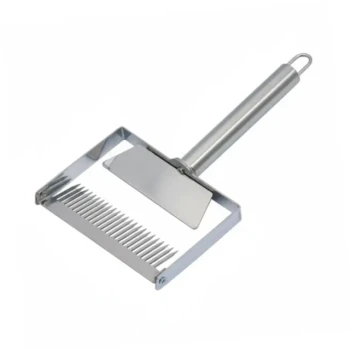Yes, you absolutely can extract honey without a mechanical extractor. The two primary alternatives are the "crush and strain" method, where you physically crush the honeycomb and filter the honey out, and the "cut comb" method, where sections of the comb are cut out to be consumed directly. These techniques are simple, require minimal equipment, and are highly effective for small-scale beekeepers.
While a centrifugal extractor is the standard for preserving honeycomb, you do not need one to harvest honey. The key is understanding that extractor-less methods trade the reusability of the comb for simplicity and a lower initial cost.
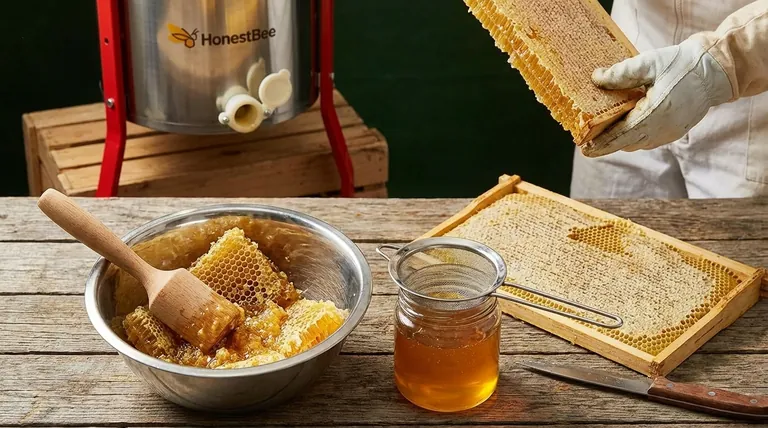
Why Choose an Extractor-less Method?
Honey extractors are the industry standard for a reason: they are efficient and preserve the delicate beeswax comb, which bees can then reuse. However, there are compelling reasons to use a simpler, manual method.
Lower Cost and Simplicity
The most obvious benefit is avoiding the cost of a new piece of equipment. Extractors can be expensive and bulky to store. The crush and strain method requires only basic kitchen tools like a bucket, a knife, and a sieve or cheesecloth.
Ideal for Specific Honey Products
If your goal is to produce cut comb (honey sold and eaten in its wax container) or chunk honey (a piece of cut comb placed in a jar of liquid honey), an extractor is not suitable anyway. These products require you to cut the comb directly from the frame.
Compatibility with Different Frames
The crush and strain method works with nearly any type of frame, including those with plastic foundation. The cut comb method is best suited for frames that have no foundation or use a special, thin foundation designed to be eaten.
The Two Primary Methods Explained
Your choice of method depends on your frames and your desired final product.
The Crush and Strain Method
This is the most common non-extractor technique. You scrape the comb off the frame, crush it thoroughly to break open all the wax cells, and then pour the mixture through a filter to separate the liquid honey from the beeswax.
It is a straightforward but messy process. The result is pure, liquid honey, but the beeswax comb is destroyed and must be rendered or discarded.
The Cut Comb Method
This method is less about extraction and more about preparation. It is used when you intend for the comb itself to be consumed.
You simply use a sharp knife to cut clean sections of honeycomb directly from a foundationless frame. These pieces are then packaged and sold or eaten as-is, offering a unique texture and flavor experience.
Understanding the Trade-offs
Choosing not to use an extractor involves important compromises that every beekeeper should understand.
The Loss of Drawn Comb
This is the single biggest drawback. Bees expend an enormous amount of energy and resources (consuming about 8 pounds of honey to produce 1 pound of wax) to build their comb.
When you use an extractor, the empty comb is returned to the hive. The bees can immediately begin refilling it, giving them a massive head start on the next honey flow. When you crush the comb, the bees must rebuild it from scratch, significantly slowing down future honey production.
Labor Intensity at Scale
While simple for one or two hives, the crush and strain method can become very time-consuming and inefficient for larger harvests. Extractors are designed for speed and can process many frames in the time it takes to manually crush and filter one.
Making the Right Choice for Your Goal
The best method depends entirely on your beekeeping philosophy, scale, and desired product.
- If your primary focus is a simple, low-cost harvest from one or two hives: The crush and strain method is an excellent and perfectly viable choice.
- If your primary focus is maximizing long-term honey production: Investing in an extractor to preserve your drawn comb is the most efficient strategy.
- If your primary focus is producing a specialty product like honeycomb: The cut comb method is the required technique for that specific outcome.
Ultimately, choosing your harvesting method is a key decision that defines your approach to beekeeping.
Summary Table:
| Method | Best For | Key Feature | Main Trade-off |
|---|---|---|---|
| Crush & Strain | Low-cost, liquid honey | Uses basic kitchen tools | Destroys wax comb, bees must rebuild |
| Cut Comb | Specialty honeycomb products | No extraction needed | Requires foundationless frames |
Ready to scale up your honey harvest?
For commercial apiaries and distributors, maximizing efficiency and preserving drawn comb is key to profitability. The manual methods described are excellent for small-scale or specialty production, but a reliable honey extractor is essential for larger operations.
HONESTBEE supplies the durable, high-capacity beekeeping equipment you need. We help commercial beekeepers and equipment distributors increase yield and streamline operations with our wholesale-focused selection of extractors, uncapping tools, and more.
Contact our team today to discuss your commercial beekeeping supply needs and get a wholesale quote.
Visual Guide
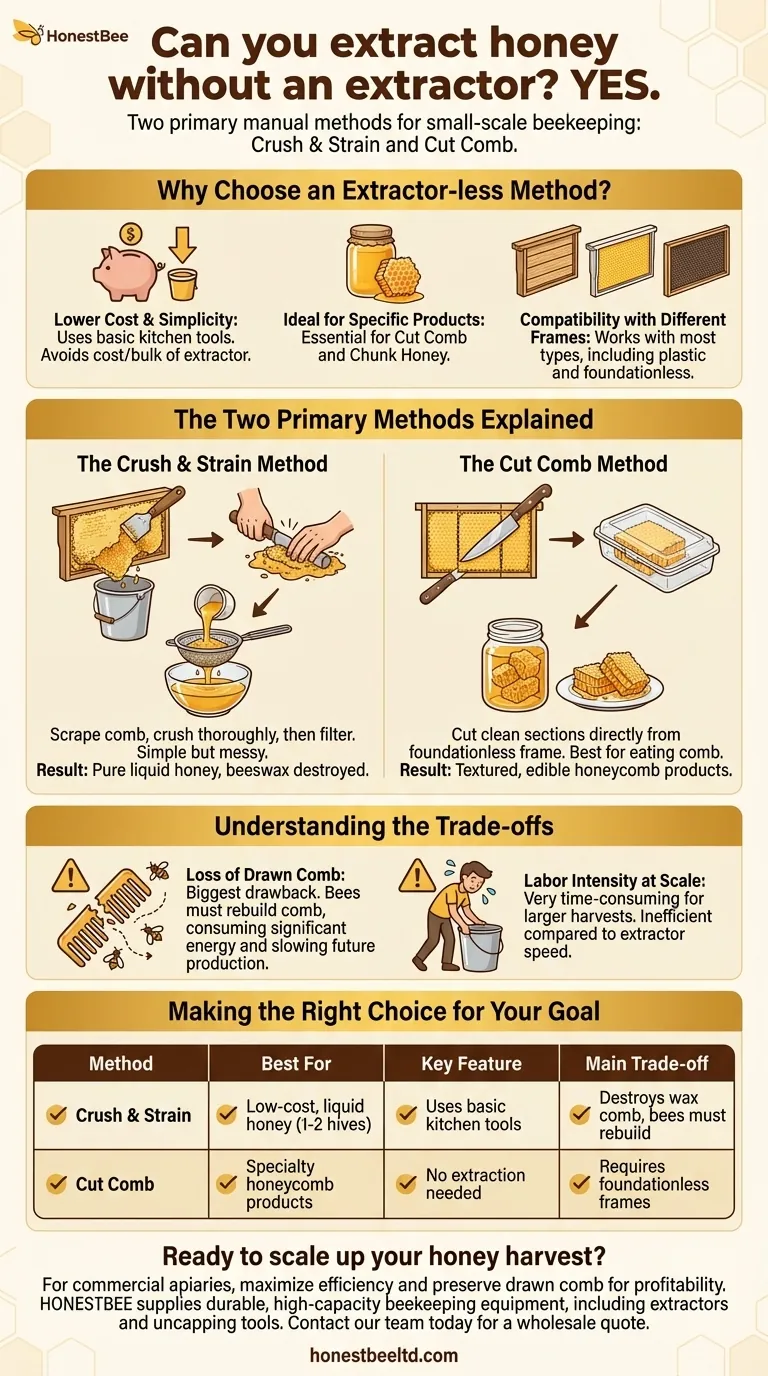
Related Products
- 2 Frame Stainless Steel Manual Honey Spinner Extractor for Beekeeping
- HONESTBEE 3-Frame Manual Acrylic Honey Extractor
- 6 Frame Manual Stainless Steel Honey Extractor Beekeeping Equipment
- Electric 8 Frame Honey Spinner Extractor Equipment for Beekeeping
- Stainless Steel 3 Frame Manual Honey Extractor Spinner for Bee Honey Extraction
People Also Ask
- Can a manual extractor be upgraded to an electric one? Save Labor & Boost Efficiency
- How can a pressure washer be used to clean a honey extractor? A Guide to Safe and Efficient Cleaning
- What are the advantages of tangential honey extractors? Gentle, Affordable Honey Extraction for Your Apiary
- What are some tips for using a honey extractor effectively? Maximize Your Honey Yield and Protect Your Comb
- How do beekeepers harvest honey from the honey super? A Step-by-Step Guide to Efficient Extraction













